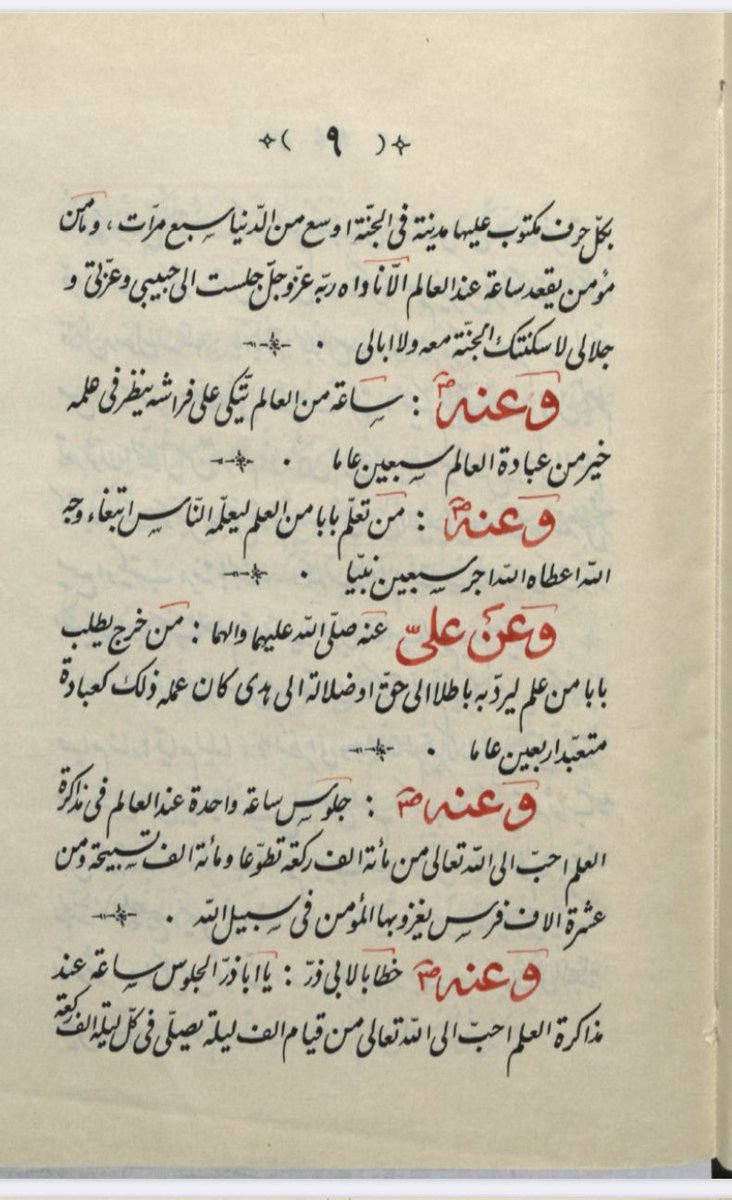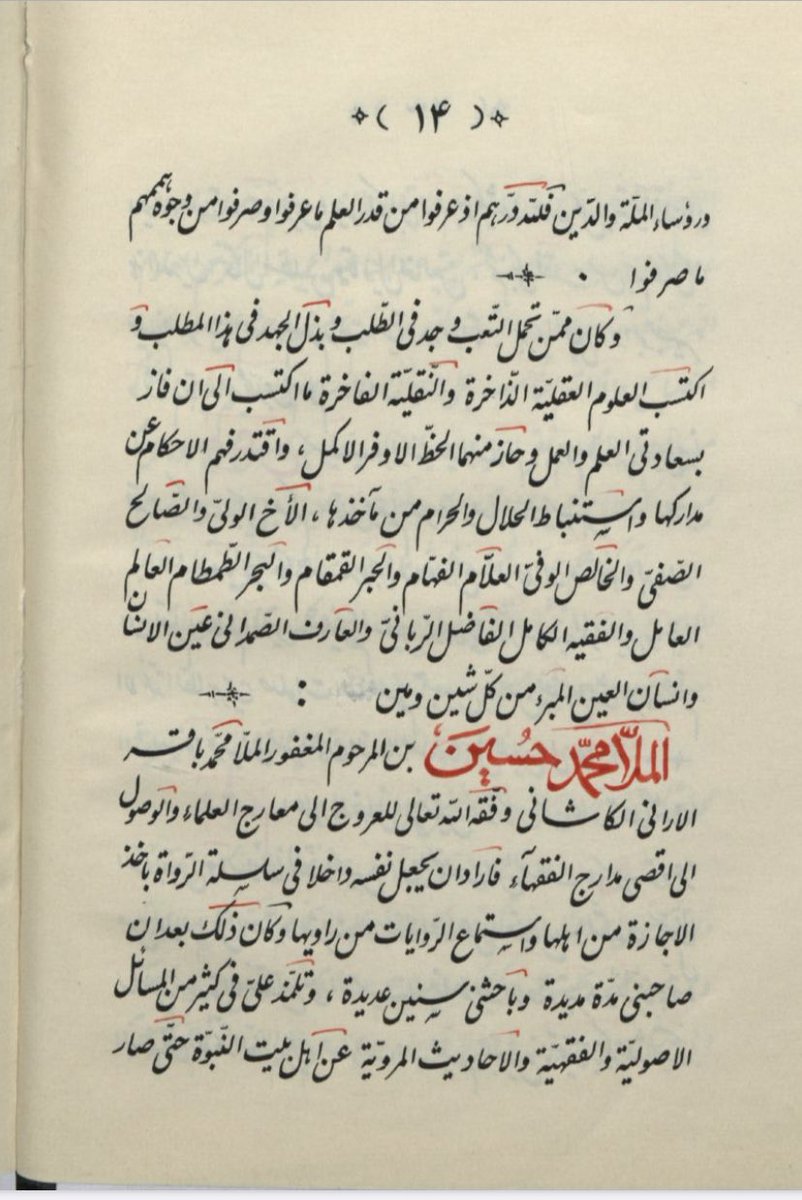Discover and read the best of Twitter Threads about #Manuscripts
Most recents (24)
In this thread, I’ll be breaking down my #PhD thesis completed @IMESuoe in 2022 with the support of @alwaleed_centre. I aimed to explore the early development of Tafsīr through the exegetical contributions of Sufyān al-Thawrī (d. 161/778).
#Tafsir #Quran #Exegesis
#Tafsir #Quran #Exegesis
The complete thesis is available @EdUniMainLib Research Archive:
era.ed.ac.uk/handle/1842/39…
Principal supervisor: Andreas Görke, @IMESuoe
External examiner: Nicolai Sinai, @FAMESOx
era.ed.ac.uk/handle/1842/39…
Principal supervisor: Andreas Görke, @IMESuoe
External examiner: Nicolai Sinai, @FAMESOx
I analyzed exegetical traditions attributed to Sufyān, recorded in a unique and fragmentary manuscript in @RazaLibrary Rāmpūr. It has largely escaped a detailed historical-critical assessment in previous scholarship.
@CSMC_Hamburg
@CSMC_Hamburg
I had a great discussion w/ someone today about practical tips for studying #manuscripts
even where programs offer language instruction (not a given), there's usually ZERO practice in paleography, codicology, using catalogs, interacting with manuscript libraries, etc.
🧵
1/
even where programs offer language instruction (not a given), there's usually ZERO practice in paleography, codicology, using catalogs, interacting with manuscript libraries, etc.
🧵
1/
why is knowing a little something about working with manuscripts meaningful?
even for heavily studied languages and text corpora (like certain periods of Greek and Latin lit.), and for which there are lots of editions, manuscripts should still be attracting readers
2/
even for heavily studied languages and text corpora (like certain periods of Greek and Latin lit.), and for which there are lots of editions, manuscripts should still be attracting readers
2/
editions, even very good editions, don't replace manuscripts, especially given all of the absolutely unique qualities & features of a manuscript that may not make it into editions:
colophons, notes, special page arrangements, the way the handwriting looks, script-choice
3/
colophons, notes, special page arrangements, the way the handwriting looks, script-choice
3/
Presenting BoundaryNet - a resizing-free approach for high-precision weakly supervised document layout parsing. BoundaryNet will be an ORAL presentation (Oral Session 3) today at @icdar2021 . Project page: ihdia.iiit.ac.in/BoundaryNet/ . Details 👇 

#manuscripts #Shii MS Astan-e Quds-e Razavi 7936 Kitab al-mazar of Ibn al-Mashhadi #pilgrimage_guides 1/ 




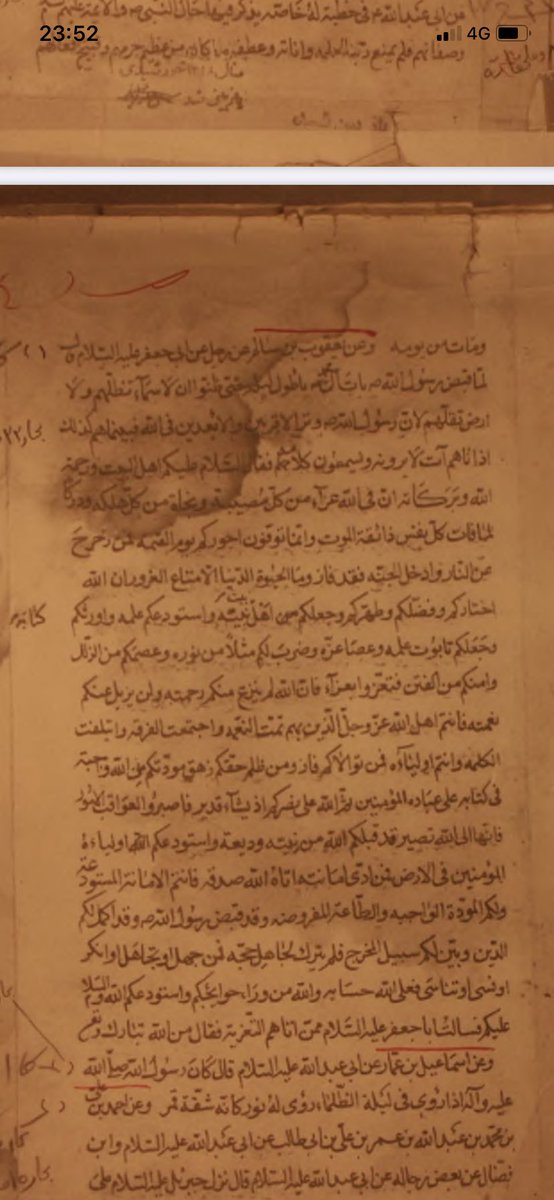
The Kitab al-mazar of Muhammad b. Ja’far al-Mashhadi (d. 594/1198) was a prominent #Shii traditionist who had studied with Ibn Shahrashub (d. 588/1192), Warram b. Abi Firas (d. 605/1208) and Sayyid Ibn Zuhra naqib of Aleppo (d. 585/1189) 2/
He had both a well grounded mastery of the traditions as well as the theology of #Shii Islam 3/
#manuscripts #Shii_arcana an important genre of writing concerns the arcana of acts of worship (asrār al-ʿibādāt) and here is MS Maktabat al-Imām al-Ḥakīm in Najaf 2032 - a copy of Asrār al-ṣalāt of Ibn Fahd al-Ḥillī (d. 841/1437) 1/ 

There are a number of classic works in the #Shii tradition on this including works by Sayyid Ḥaydar Āmulī (d. after 786/1385), Qāḍī Saʿīd Qummī (d. 1107/1696) and even recently Āyatullāh Khumaynī (d. 1989) 2/ 







Ibn Fahd was a prominent jurist and pivot of disseminating legal and ethical thought in the 14th century between #Iraq #Iran #JabalʿĀmil and a number of his students were from #EasternArabia - this is an important study 3/ 





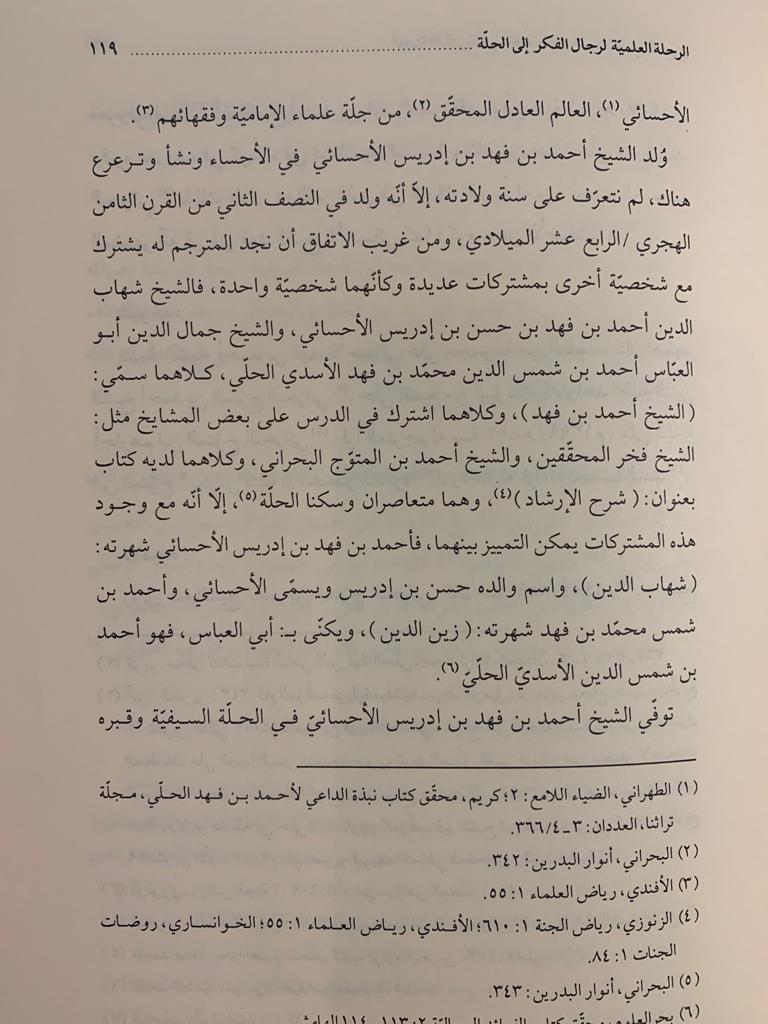

#manuscripts #ShiiLaw this is a collection of the works of Shaykh Luṭfullāh al-Maysī (d. 1032/1622) MS Kitābkhānah-yi Burūjirdī in Qum 255 1/ 

Shaykh Luṭfullāh was a jurist in the age of Shāh ʿAbbās and is perhaps best known to posterity through his mosque in the Maydan-e naqsh-e jahān in #Isfahan archnet.org/sites/1623 2/ 
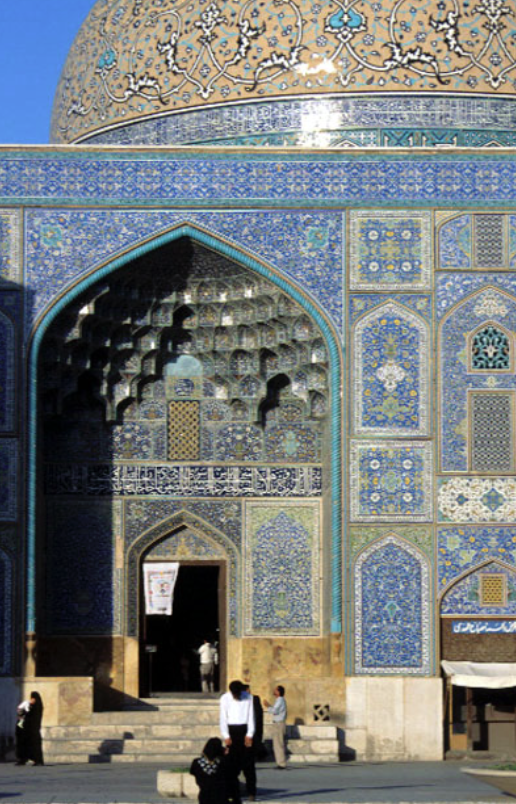
Shaykh Luṭfullāh was born in Mays in Jabal ʿĀmil (southern Lebanon) and migrated with his grandfather Ibrāhīm to the Safavid realms and #Mashhad where he studied and where he was appointed briefly as a custodians of the endowments associated with the shrine 3/
To all the new #graduate students starting their #PhD or the ones already in it. It's true that the #journey of a PhD is like #life packed into a few years. You must also understand that it is not your entire life either! Life goes on despite how this journey goes or ends! Thread 

I made this #infographic to represent my journey in #gradschool at @UMassChemEng @UMassAmherst. When you're in the thick of things, It will be hard to see the light at the end. Everyone around you will keep telling you that but most of the times it will seem #impossible!
Year 3, 4, and 5, I went through multiple cycles of #depression. I cannot put a finger on anything specific of why that happened. What I realized though, is that every time I came out of that cycle, I found enormous amounts of hidden #energy and #strength.
#manuscripts #ijazat are extremely significant sources for #intellectual_history MS Mar’ashi Qum 6446 1/ 



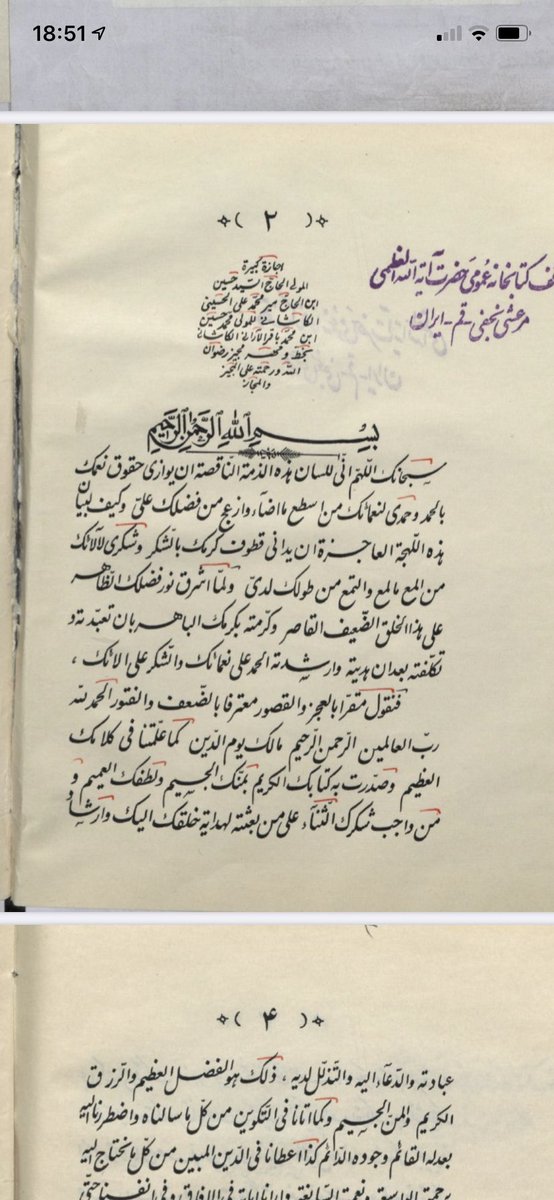
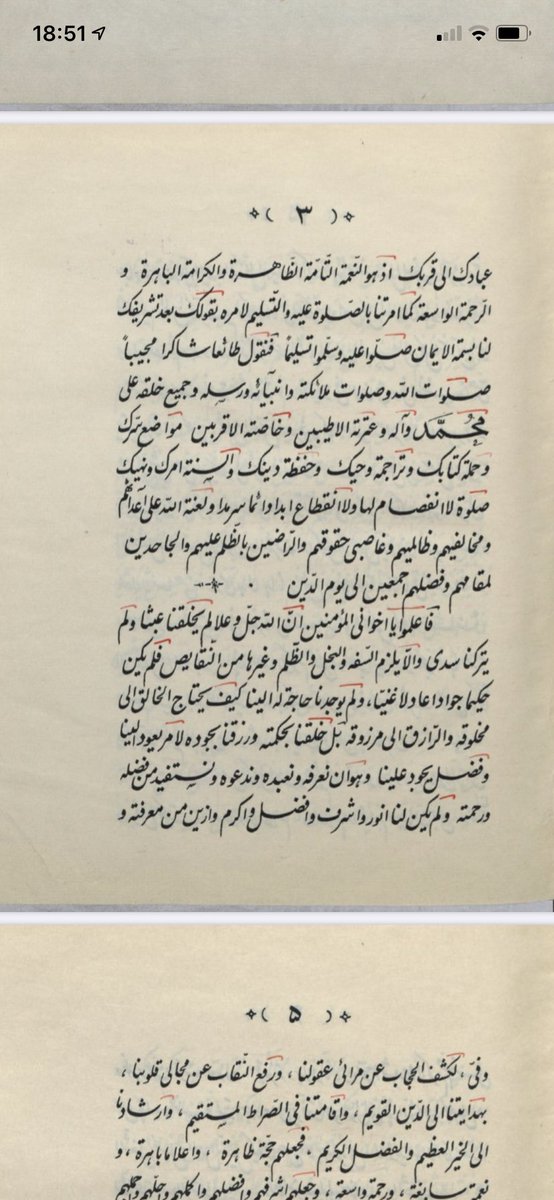
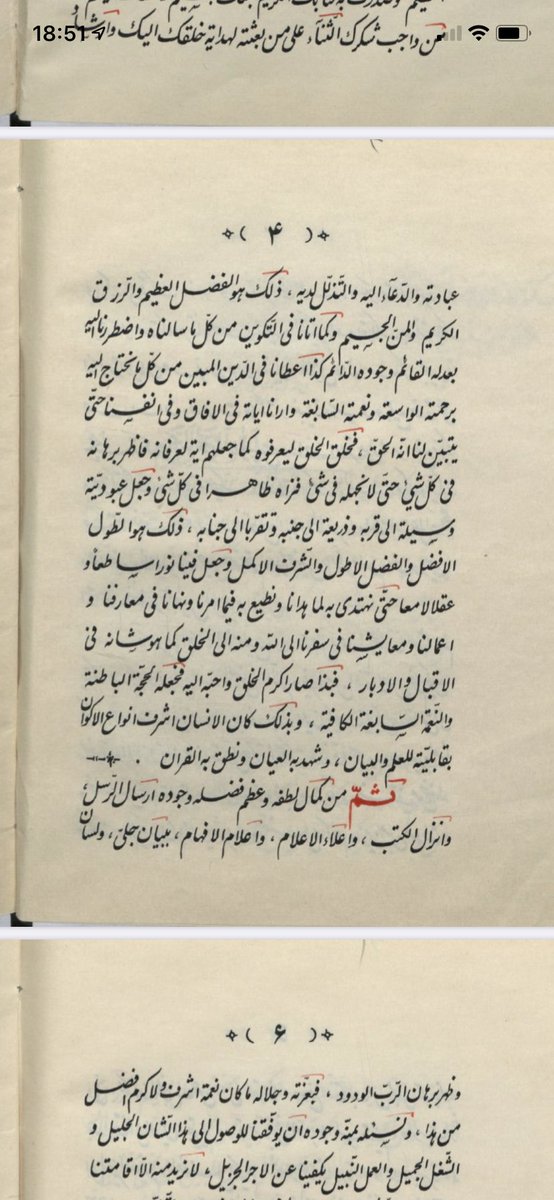
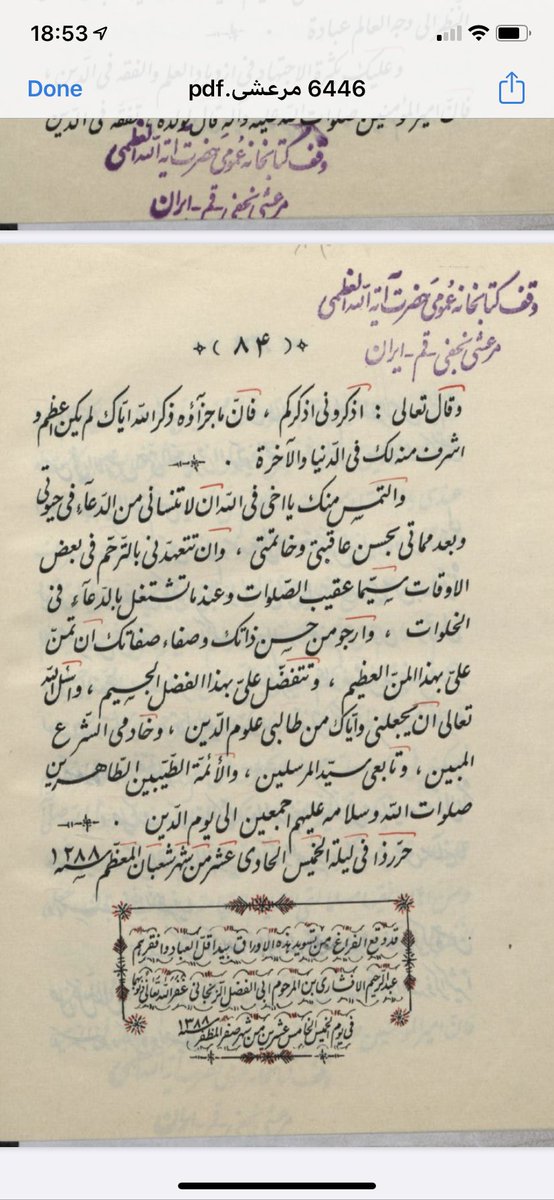
This is a license to transmit #hadith of Sayyid Husayn Kashani dated Sha’ban 1288/1871 2/
#manuscripts MS King Abdul Aziz Library Riyadh 906 #IslamicPhilosophy Mawdih al-diraya Li-sharh bab al-hidaya of Ibn Abi Jumhur al-Ahsa’i (d. 909/1503) 1/ 





IAJ was a prolific author in theology #fiqh philosophy on the cusp of the #Safavid period and there is a Institute devoted to publishing his work based in al-Ahsa headed by Sayyid ‘Ali al-Musa 2/ 



His best known works are his massive al-Mujli a combination of insights from #Shii #kalam #Avicennism #IshraqiPhilosophy and the #Sufism of #IbnArabi 3/ 



#manuscripts this is a copy of Sayyid Muḥammad ʿAbbās al-Jazāʾirī work on #epistolatry #inshāʾ in Arabic and Persian entitled al-Ẓill al-mamdūd - MS Marʿashī (Qum) 6644 - a short thread on him #ShiiIntellectualHistory #NorthIndia 1/ 







The #intellectual_history of the #Shiʿa in North India was covered well by the late Saiyad Athar Abbas Rizvi and he devotes a few pages to him in vol 2 2/ 

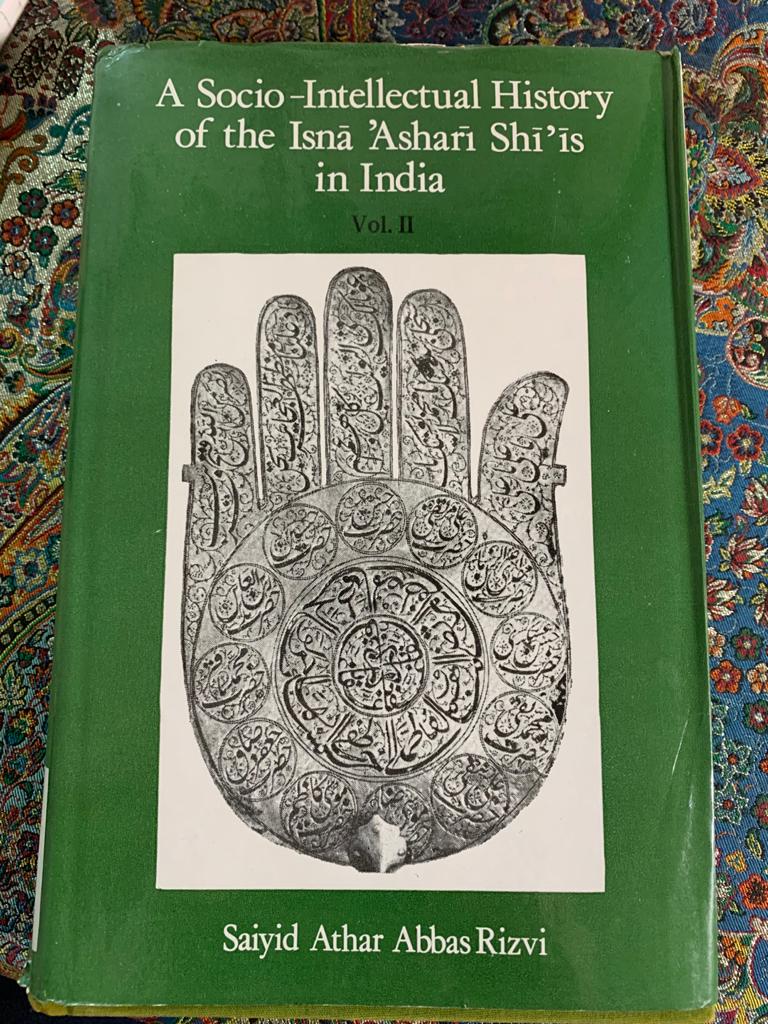

Justin Jones in his book on #Shiʿi politics in colonial North India also discusses him briefly 3/ 



There is little doubt that sometimes the best way to make sense of the transmission of texts, debates and commentaries is to dive deeply into codices of collected texts (majmūʿa-s) #manuscripts #Islamic #intellectual_history 1/
One good example is the majmūʿa MS Majlis-e Shūrā (Tehran) 5284 which includes ten texts mostly copied by Sulṭān Muḥammad b. ʿAlī Shāh Iṣfahānī in 962/1555 in Bharuch in West India 2/ 
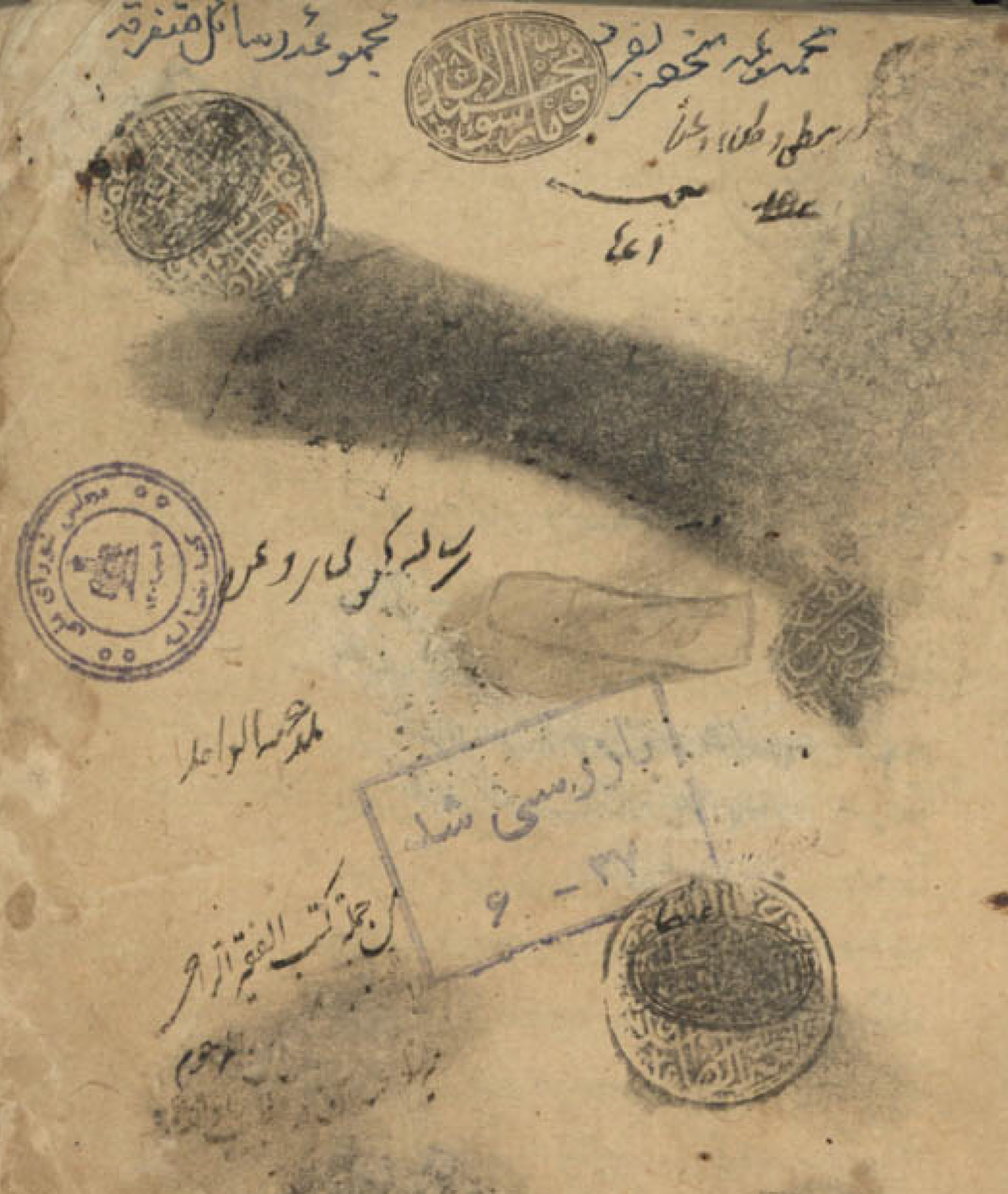
The collection begins with some works of Jalāl al-Dīn Davānī (d. 1502) - usually called Muḥammad b. Asʿad al-Ṣiddīqī in the incipits - reflecting on Naṣīr al-Dīn al-Ṭūsī (d. 1274) works on the #intellect and #nafs_al_amr and on the logical notion of #conception_taṣawwur 3/ 



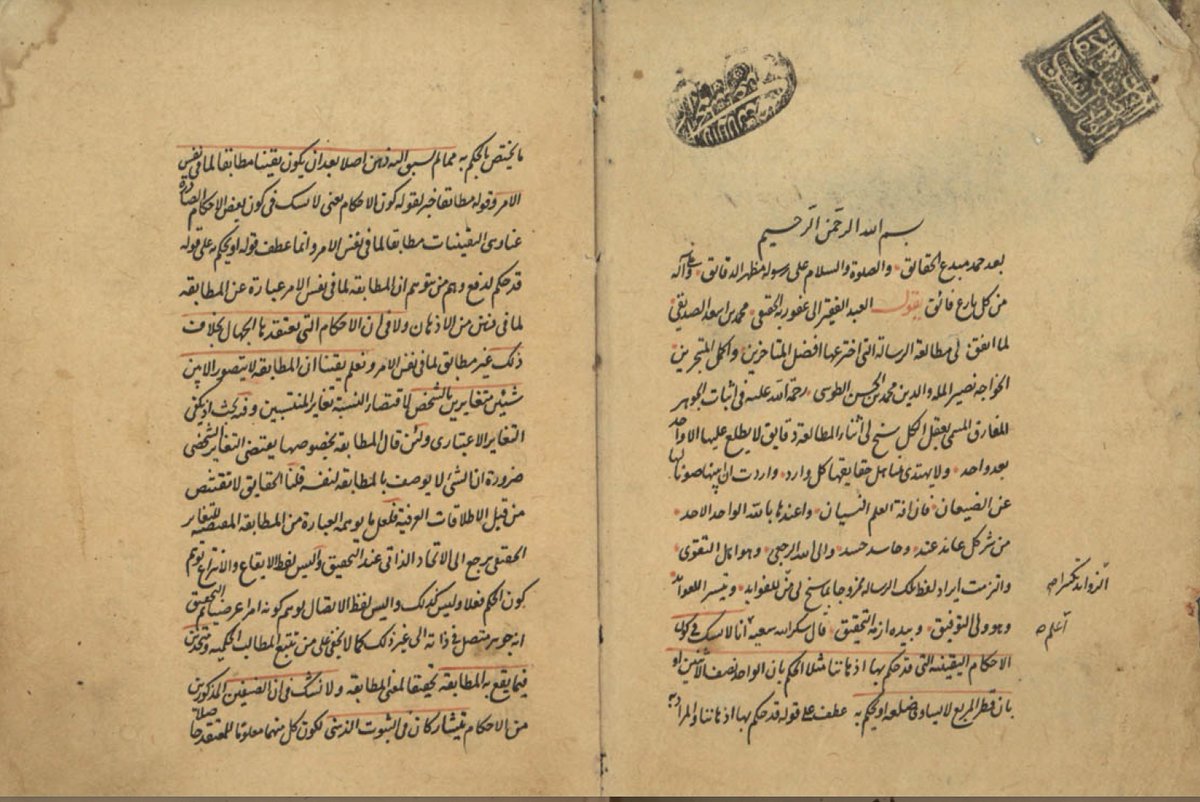

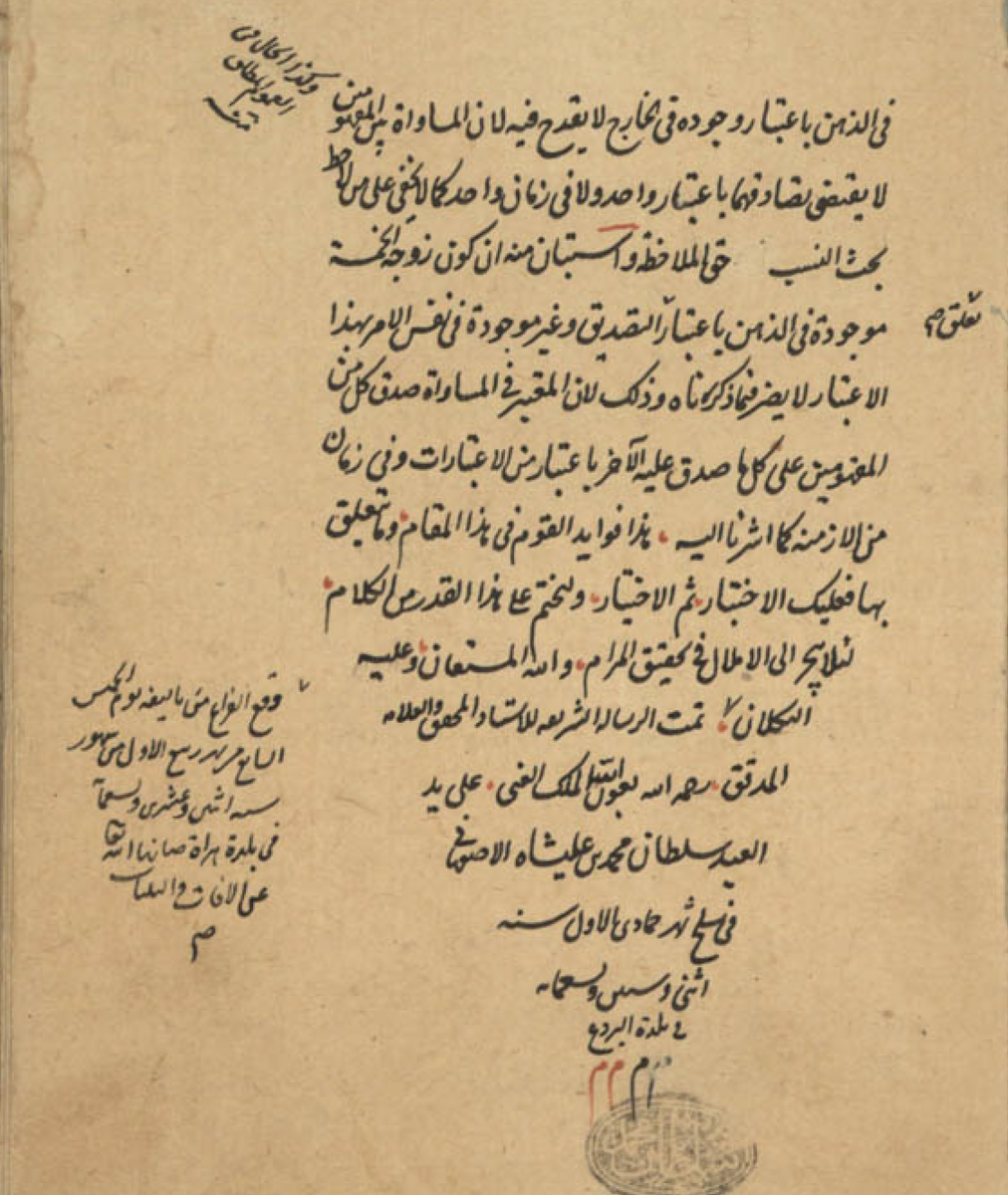
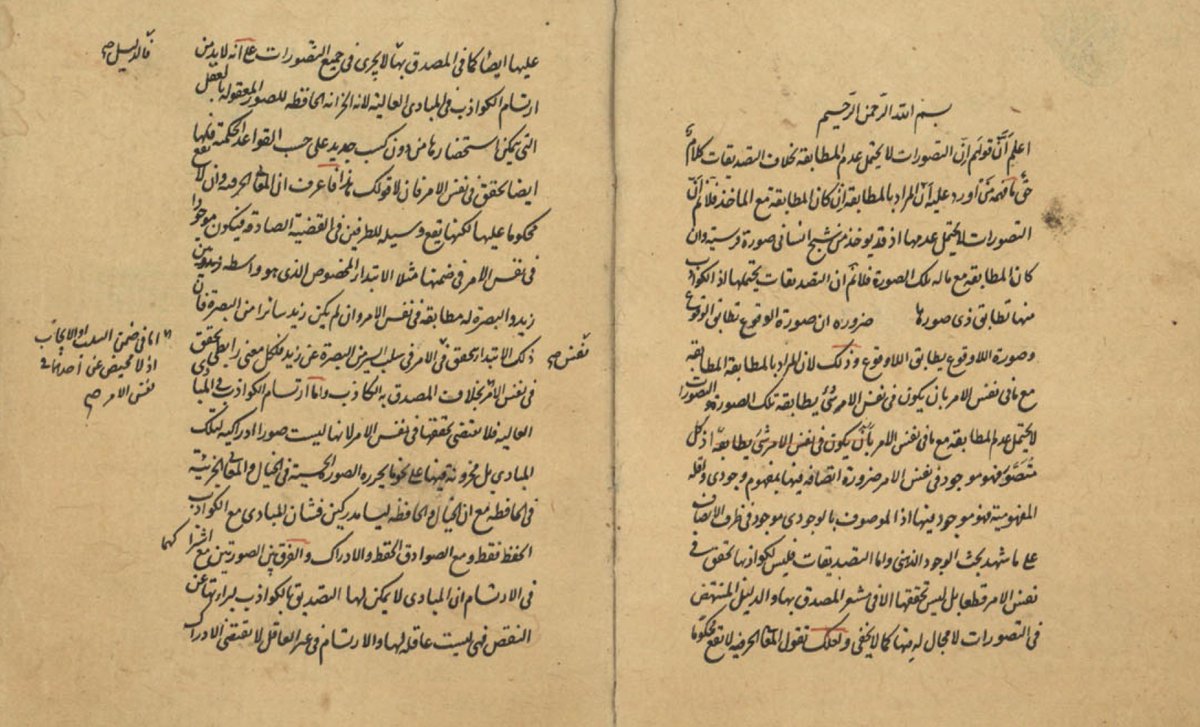
#manuscripts #Shii #PositiveLaw #fiqh for much of the middle period through the #Safavid period the main text for the introductory study of the law was al-Lumʿa al-Dimashqīya of the #FirstMartyr #ShahīdAwwal Shams al-Dīn Muḥammad Ibn Makkī al-Jizzīnī al-ʿĀmilī (d. 1384) 1/
#ShahīdAwwal famously wrote this work in prison in Damascus - and there has always been a sense that he may have had some links with the #Shii #Sarbadar rulers of Khurasan for whom he may have written it as a manual to implement alfeker.net/library.php?id… 2/ 

On #ShahīdAwwal the #Shia of Syria and his execution see this excellent article by Stefan Winter in the #MamlukStudiesReview mamluk.uchicago.edu/MSR_III_1999-W… 3/
#manuscripts Ms Majlis-e Shura-ye Islamic 1783 is a collection that includes the famous commentary on Fusus al-Hikam of #IbnArabi by Da’ud al-Qaysari (d. 1350) as well as various epistles #Sufism 1/ 




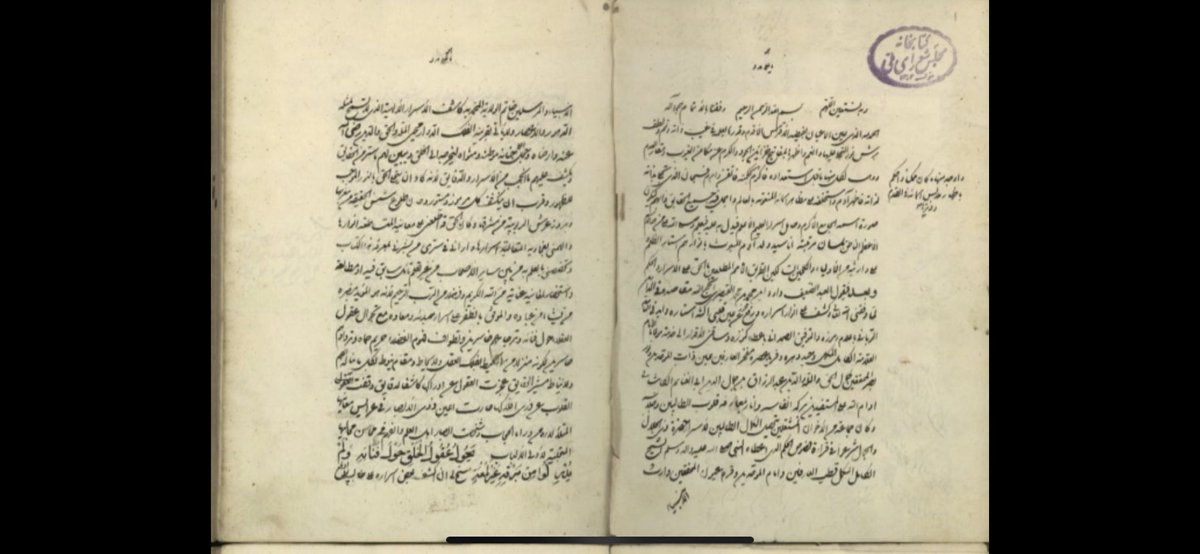
Those rasa’il are mainly by the famous #Nimatullahi #Sufi Muhammad Ja’far Kabudarahangi Majdhub ‘Ali Shah (d. 1823) who was a prominent scholar - I’ve mentioned him in threads on #Sufism in #ShiiIran before 2/
His interests ranged across #philosophy #mysticism, and #literature and he also wrote refutations of #ChristianPolemics 3/
#manuscripts #IslamicTheology this is an autograph dated 1003/1595 of Shaykh Baha’ al-Din al-‘Amili (d. 1621) the #Safavid #ShaykhalIslam of Isfahan of his commentary on 43rd supplication of al-Sahifa al-Sajjadiya MS Tehran University Central Library 1 1/ 
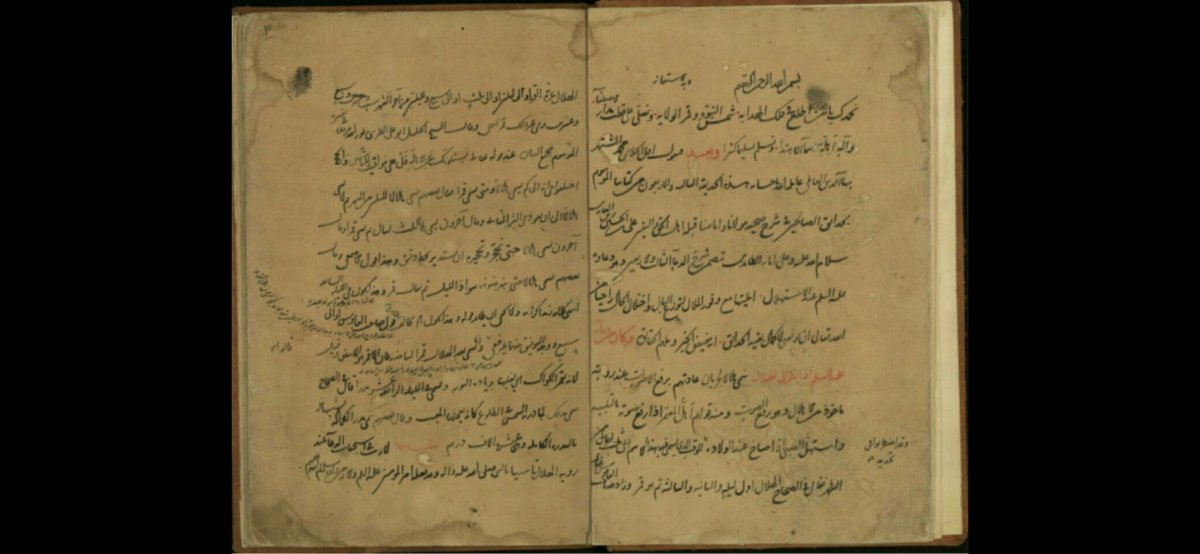
Al-Hadiqa al-hilaliya as the text is also known is a commentary on the Supplication of the Crescent Moon ketabpedia.comتحميل/الحديقه-الهلاليه-شرح-دعاء-الهلال-من-صح/ 2/ 
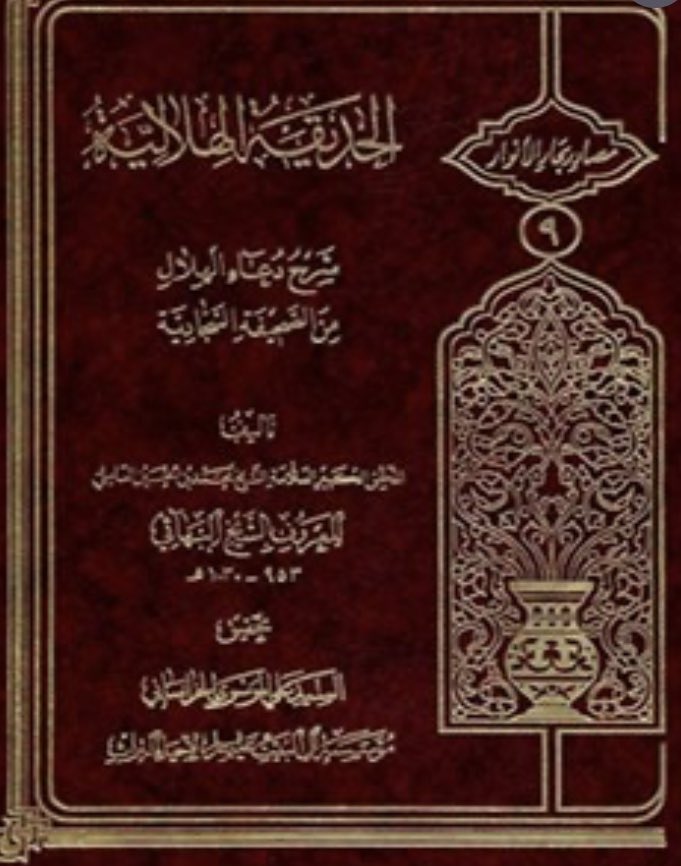
Al-‘Amili played an important role in the popularisation and dissemination of al-Sahifa al-Sajjadiya, a prominent collection of supplications attributed to the 4th Imam #ZaynalAbidin imamhussain.org/literature/268… 3/
#manuscripts #ShiiTheology an autograph of Sayyid Ahmad ‘Alawi ‘Amili (d. c. 1650), son-in-law of Mir Damad (d. 1631), commentary on one of the #FourBooks of #ShiiHadith al-Istibsar of al-Tusi (d. 1065) MS Mar’ashi 5368 dated 1039/1629 1/ 



It seems that this commentary was written in refutation of the #Akhbari commentary of Muhammad Amin Astarabadi (d. c. 1626) hadith.net/PrintSourceTex… 2/
The #FourBooks seem to have become canonised during the #Safavid period with the earliest explicit reference in the work of al-Shahid II Zayn al-Din al-‘Amili d. 1558), although one finds reference in the later 15th century to الاصول الاربعة and الاصول الخمسة
I posted this way back on my Instagram account but thought it would be of interest here: an #Arabic #inscription on Sé Velha de Coimbra (Old Cathedral of #Coimbra, #Portugal). (Photo of inscription taken by me). 1/7 





It reads كتبت وقد ابقيته لشكايتي ستفنا يدي يوما ويبقا كبر ('I wrote this as a permanent record of my suffering; my hand will perish one day, but greatness will remain'). This inscription and others from Portugal were published by A.R. Nykl (jstor.org/stable/4515632…). 2/7 



This poetic lament is common to #scribal traditions in #manuscripts. Typically, the scribe reflects on the fleeting nature of this life and the enduring nature of the written word (cf. Verba volant, scripta manent!). Here are some examples (info in captions): 3/7 





Let's explore a bit further East and browse our exquisite #Persian language resources.
@SOASLibrary has 15,000+ published items in/about Persian on its shelves.
@SOAS_SpecColl hold a very fine selection of manuscripts, rare books, periodicals and archives in Persian.
#SOASLangs


@SOASLibrary has 15,000+ published items in/about Persian on its shelves.
@SOAS_SpecColl hold a very fine selection of manuscripts, rare books, periodicals and archives in Persian.
#SOASLangs
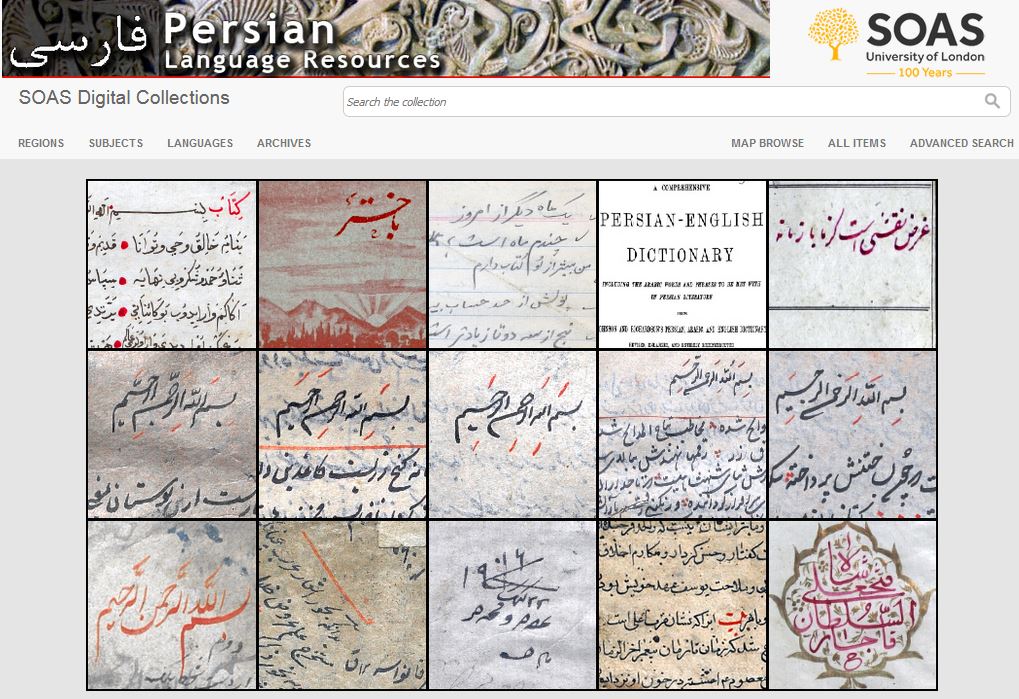
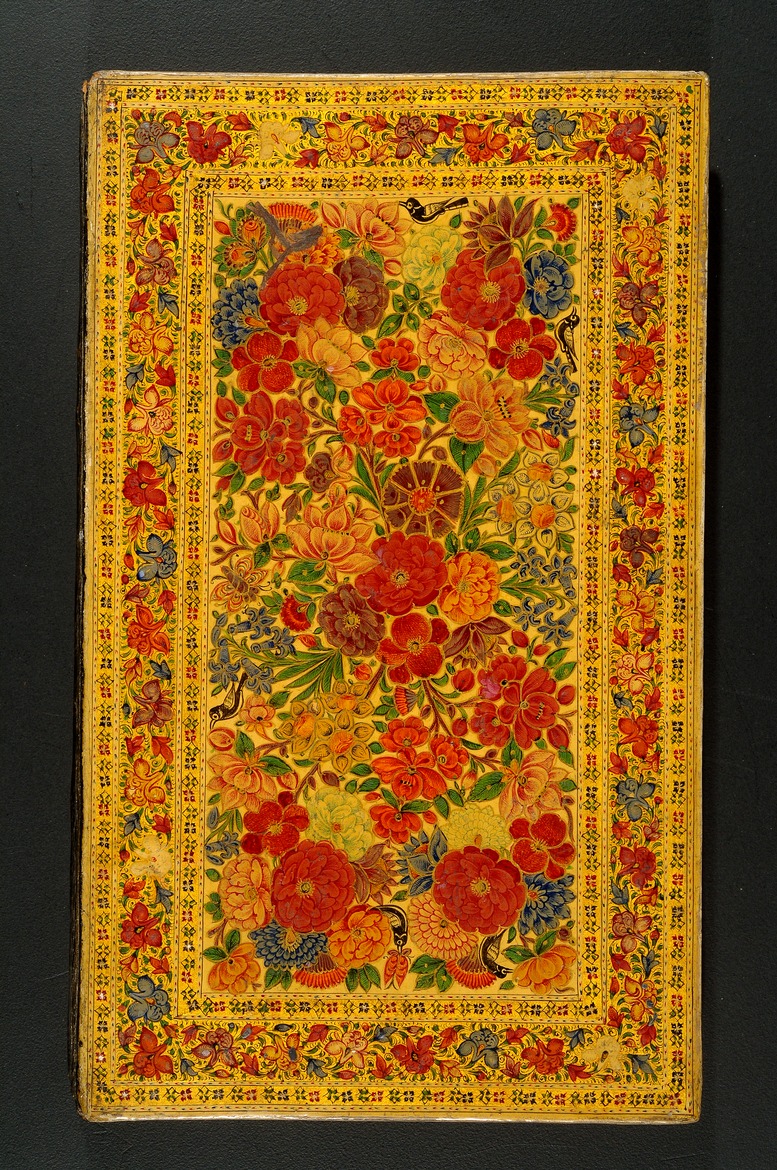
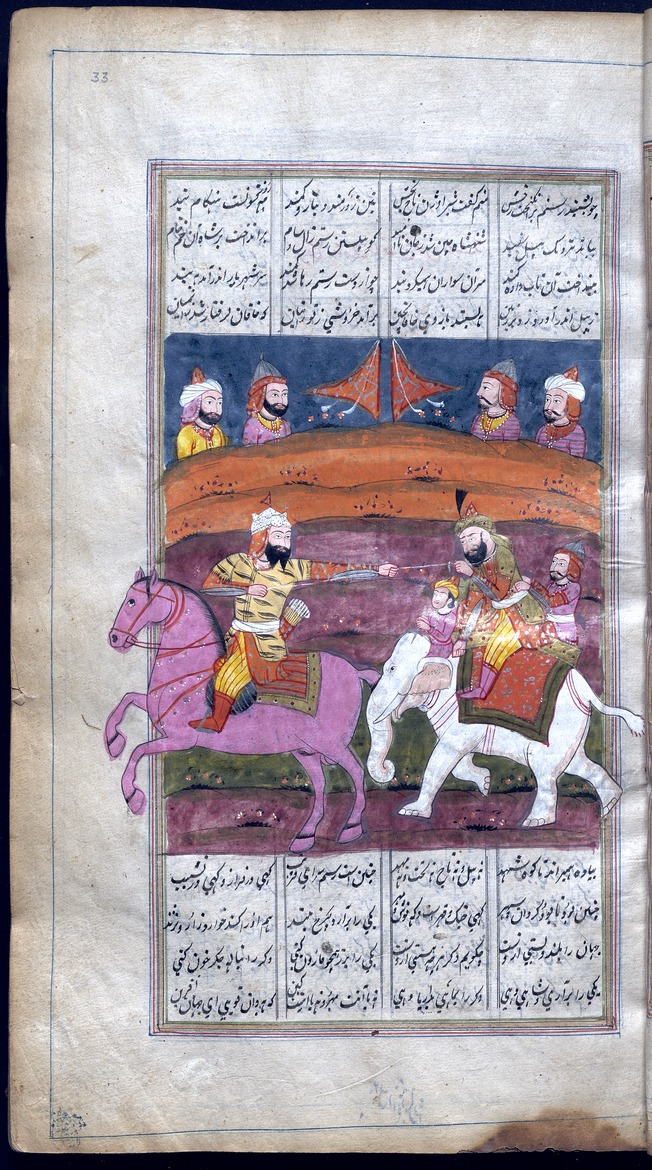
Want to know more about #Persian?
Halt here and get's captivated by the history of that beautiful language recounted by Narguess Farzad for @SOAS Languages for Lockdown series, in 3 episodes:
1) bit.ly/2ZfSxTc
2) bit.ly/3gL6IFP
3) bit.ly/3217pqB
Halt here and get's captivated by the history of that beautiful language recounted by Narguess Farzad for @SOAS Languages for Lockdown series, in 3 episodes:
1) bit.ly/2ZfSxTc
2) bit.ly/3gL6IFP
3) bit.ly/3217pqB
One of our shining stars of #Persian manuscripts is Ms10102: a sumptuous Mughal Court copy dated 978 AH (1570 CE) of the famous Anvār-i Suhaylī (Lights of the Canopus) by Ḥusayn Vāʻiẓ al-Kāshifī, also known as Fables of Bidpai.
#SOASLangs #Persian #Manuscripts #Mughal

#SOASLangs #Persian #Manuscripts #Mughal
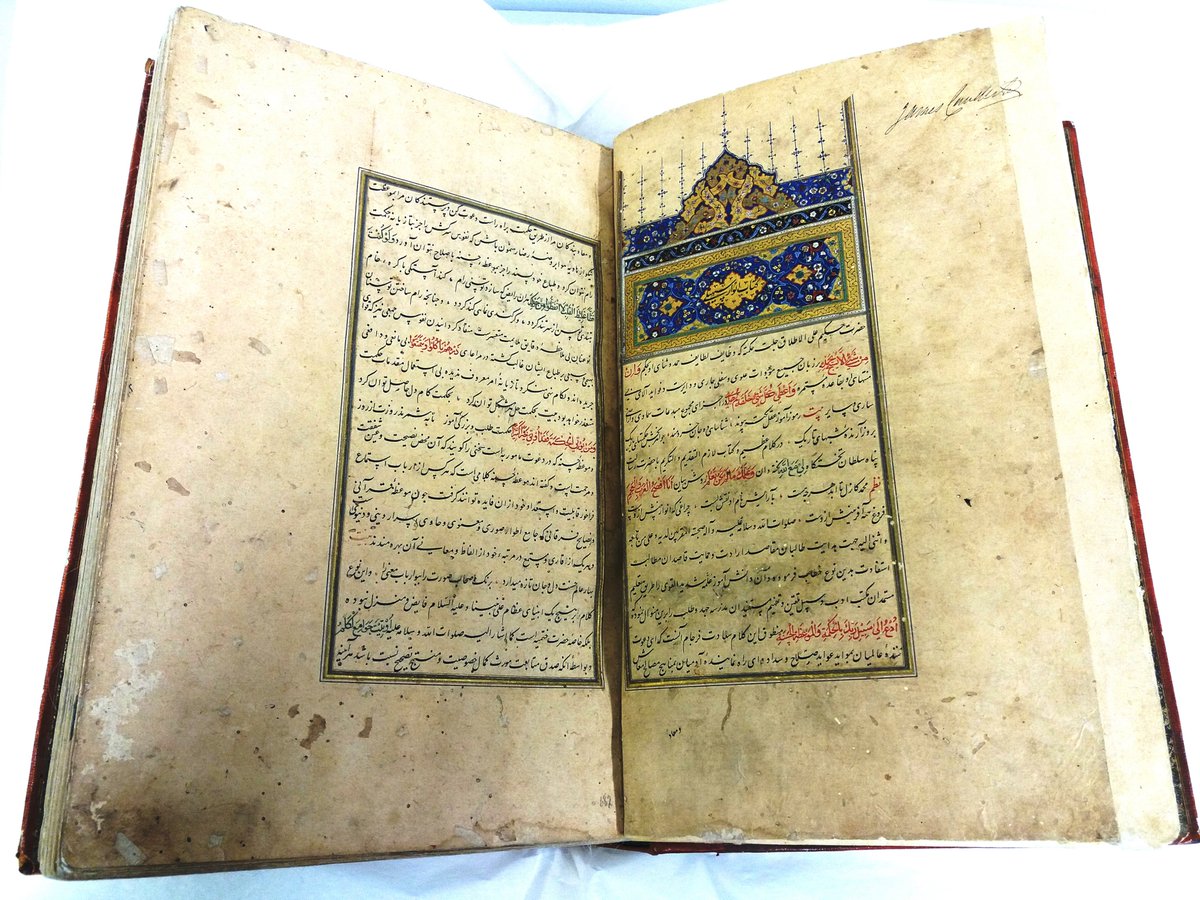

This #SOASLangs week, we'll delve in our #African languages holdings @SOASLibrary and @SOAS_SpecColl, or rather just brush on their surface: with several 100s of languages and dialects represented, it is our most #multilingual collection!
#AfricanLanguages #Multilingualism


#AfricanLanguages #Multilingualism
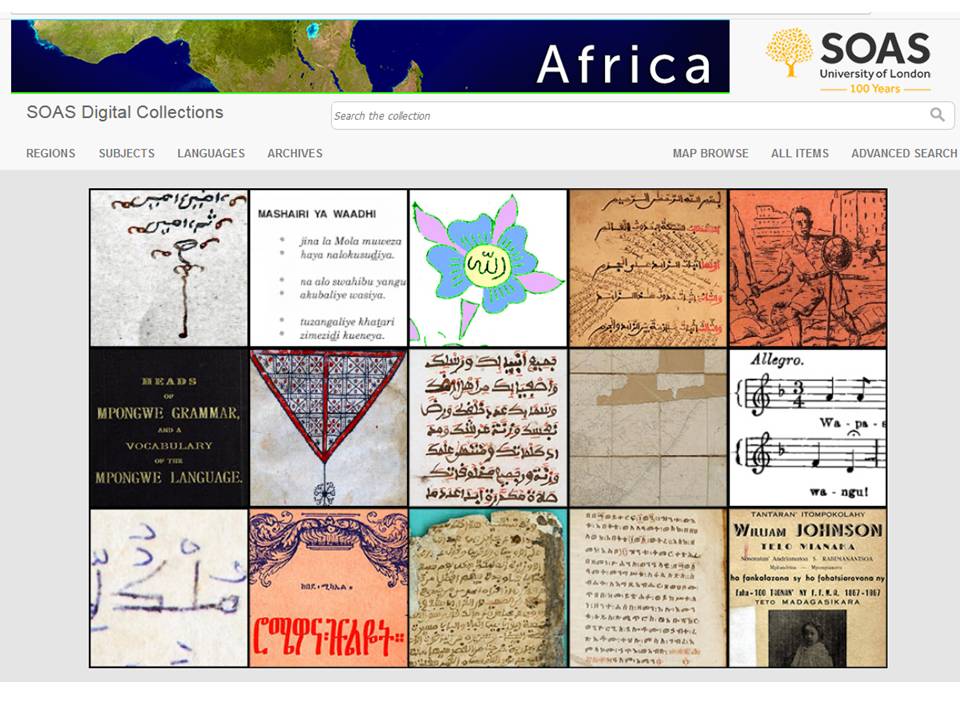
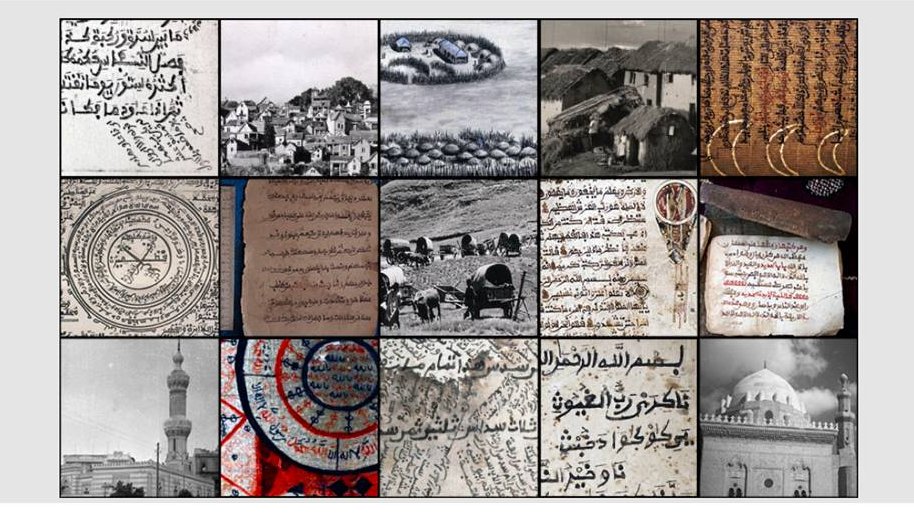
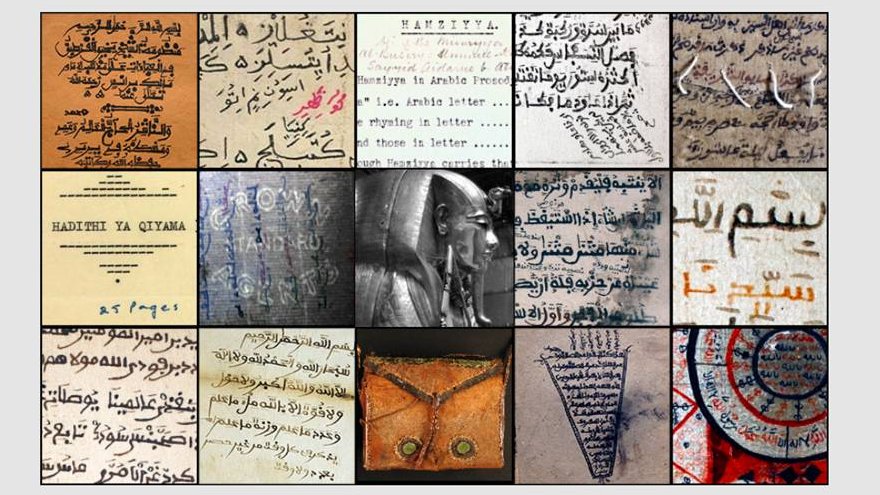
Let's start with #Swahili also known as #Kiswahili.
This @SOAS "Language for Lockdown" video is a great introduction to the 1,200 years history of Swahili: .
#SOASLangs #SOASfromHome
This @SOAS "Language for Lockdown" video is a great introduction to the 1,200 years history of Swahili: .
#SOASLangs #SOASfromHome
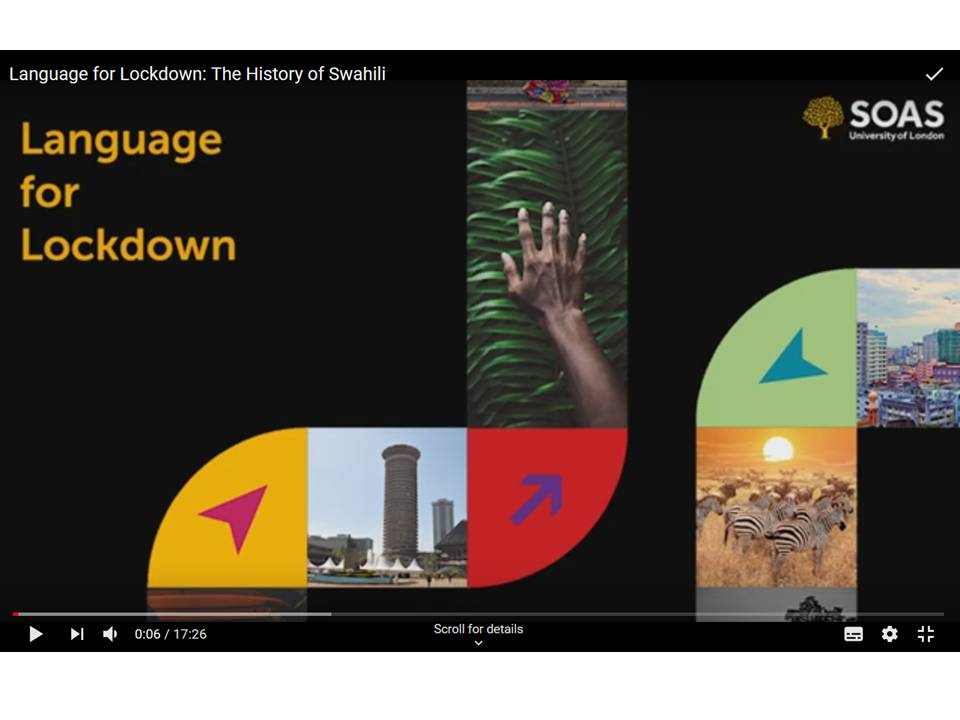
@SOAS @CAS_SOAS @SOAS_SpecColl hold a great collection of Swahili manuscripts, see digital.soas.ac.uk/swahili.
Among them figure a few copies of al-Inkishafi "The Soul's Awakening", a 19th cent. poem by Sayyid Abdallah bin Ali bin Nassir.
#Swahili #SOASLangs #SOASfromHome #Inkishafi
Among them figure a few copies of al-Inkishafi "The Soul's Awakening", a 19th cent. poem by Sayyid Abdallah bin Ali bin Nassir.
#Swahili #SOASLangs #SOASfromHome #Inkishafi
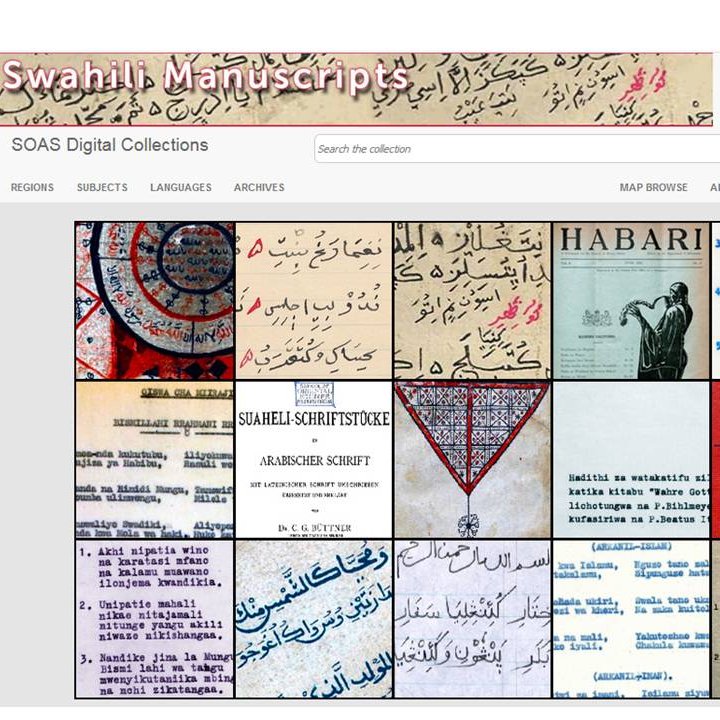
#IslamicPhilosophy #manuscripts #autograph of the Shaykhī leader Sayyid Kāẓim Rashtī (d. 1843) in a codex of his collected works MS 2087 Marʿashī Library in Qum 1/ 
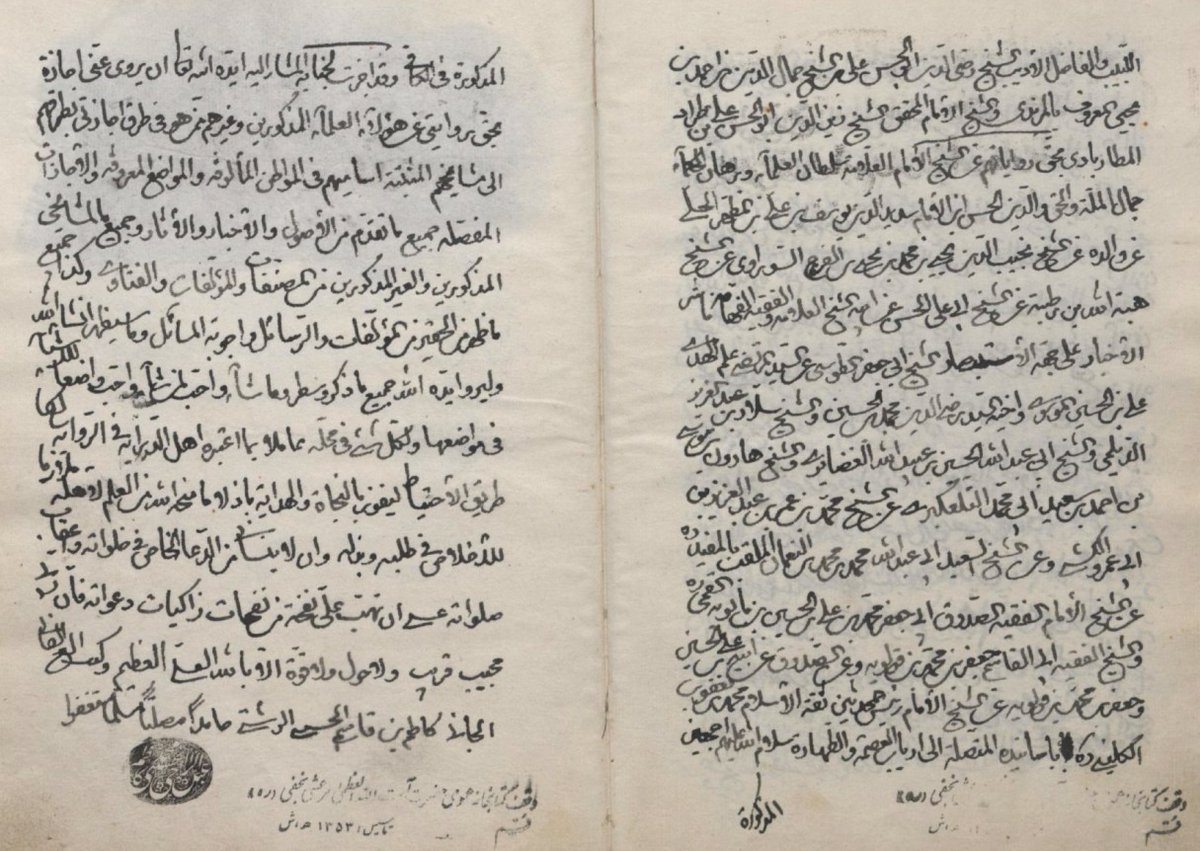
Given the importance of the works of the early Shaykhī leaders like Shaykh Aḥmad al-Aḥsāʾī (d. 1826) and Sayyid Kāẓim it is a shame that there are still so few critical editions of their works 2/
What we have on the whole are the lithographs produced in Kerman in the late 19th C and their reprints and re-typeset copies or popular editions produced by the Tabriz/Kuwait branch of the #Shaykhīya 3/
#QuranicExegesis #manuscripts #autograph of Muḥsin Fayḍ Kāshānī (d. 1680) on the margins on his shortened commentary Aṣfā al-tafsīr in codex MS 2021 Kitābkhāna-yi Madrasa-yi Sipahsālār in Tehran 1/ 

The exegesis has been edited and published many times and is available here alfeker.net/library.php?id… 2/
The codex was copied in 1679 and later came into the possession of the Qajar statesman and patron Muḥammad Ḥasan Khān Iʿtimād al-Salṭana (d. 1894) in 1874 and six years later was gifted to the Madrasa-yi Sipahsālār shortly after construction on it began 3/
#IslamicPhilosophy #manuscripts #autograph of Mullā Naʿīmā Ṭāliqānī (d. 1748) on the margins of a codex of Mullā Ṣadrā's Sharḥ Hidāyat al-ḥikma first copied in 1666 MS 151 Kitābkhāna-yi Namāzī-yi Khūy 1/ 

Mullā Ṣadrā's commentary on al-Abharī (d. 1265) Avicennian compendium Hidāyat al-ḥikma was very popular already soon after his death and disseminated into #Ottoman and #Mughal contexts soon after 2/
Ṭāliqānī famously survived the sack of Isfahan by the Afghans in 1722 and wrote his summary of the metaphysics of Mullā Ṣadrā in exile in Qum - entitled Aṣl al-uṣūl 3/
#IslamicLaw #manuscripts #autograph of Muḥammad Taqī Majlisī (d. 1659) of his own Lavāmiʿ-yi ṣāḥibqirānī on the section on prayer (ṣalāt) from codex MS 1846 Tehran University Central Library1/ 

The text is a long commentary in Persian on Man lā yaḥḍuruhu ʾl-faqīh of al-Shaykh al-Ṣadūq (d. 991), and he also wrote an Arabic commentary Rawḍat al-muttaqīn available here ketabpedia.comتحميل/روضة-المتقين-في-شرح-من-لا-يحضره-الفقيه/ 2/
Majlisī's text was very famous in its time and considered to be a manual that rivalled the earlier Jāmiʿ-yi ʿAbbāsī of Shaykh Bahāʾ al-Dīn al-ʿĀmilī (d. 1621) in its influence especially among the mystically inclined and Sufis who shared his taste 3/
**Newsflash #MedievalTwitter**
'Inks and Paints of the #MiddleEast: A Handbook of #Abbasid Art Technology', @joumajnouna's new book, is AMAZING! 🎨🖌️📖
And here's why: a thread touching on #Manuscripts, #MedievalMedicine, #GlobalMiddleAges, etc. (1/12)
'Inks and Paints of the #MiddleEast: A Handbook of #Abbasid Art Technology', @joumajnouna's new book, is AMAZING! 🎨🖌️📖
And here's why: a thread touching on #Manuscripts, #MedievalMedicine, #GlobalMiddleAges, etc. (1/12)
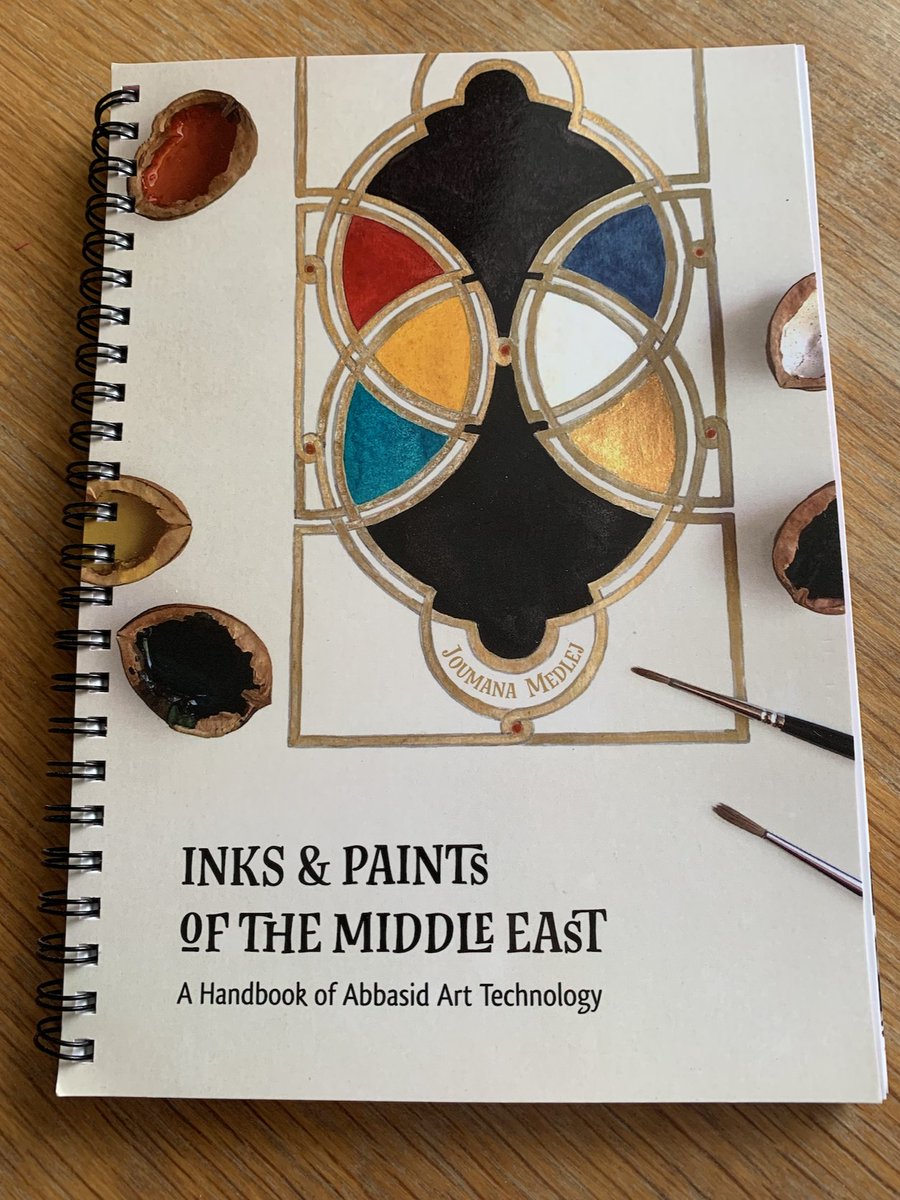
Note: this informative, accessible (and, extra bonus, beautiful) handbook is a good read for historians of all periods - not just medievalists! - but it's especially relevant for medievalists, archaeologists, conservators, artists, material scientists, etc. (2/12)
And it should be essential reading for anyone working on/interested in:
- Manuscript studies #Manuscripts
- History of medicine & pharmacy #MedievalMedicine #MedMed #HistMed
- The transfer of knowledge/movement of substances in a global context #GlobalMiddleAges
Why? (3/12)
- Manuscript studies #Manuscripts
- History of medicine & pharmacy #MedievalMedicine #MedMed #HistMed
- The transfer of knowledge/movement of substances in a global context #GlobalMiddleAges
Why? (3/12)
Around 3000 BCE in eastern #Europe, a Proto-Balto-Slavic #language started to diverge from #ProtoIndoEuropean.
The #Slavic branch of the #IndoEuropean #languages began about 2,000 years later when Proto-Slavic deviated from Proto-Balto-Slavic.
[Image: commons.wikimedia.org/wiki/File:Balt…]
The #Slavic branch of the #IndoEuropean #languages began about 2,000 years later when Proto-Slavic deviated from Proto-Balto-Slavic.
[Image: commons.wikimedia.org/wiki/File:Balt…]
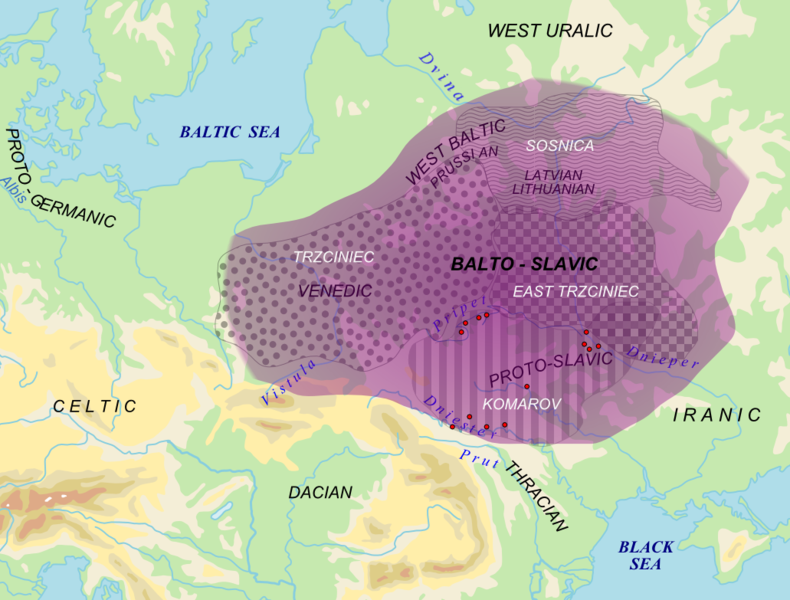
As the #Slavic-speaking area expanded during the first millennium CE (striped area on map), Proto-Slavic transitioned to Common Slavic. The #language underwent minor changes that occurred mostly uniformly across eastern #Europe, thereby maintaining mutual intelligibility. 

Around the year 1000 CE #CommonSlavic began to split into the South, West, and East branches to which all modern #Slavic #languages belong.
Roughly 315m people speak a Slavic #language, mostly in Eastern #Europe (including the #Balkan peninsula), #CentralAsia, and #Siberia.
Roughly 315m people speak a Slavic #language, mostly in Eastern #Europe (including the #Balkan peninsula), #CentralAsia, and #Siberia.




